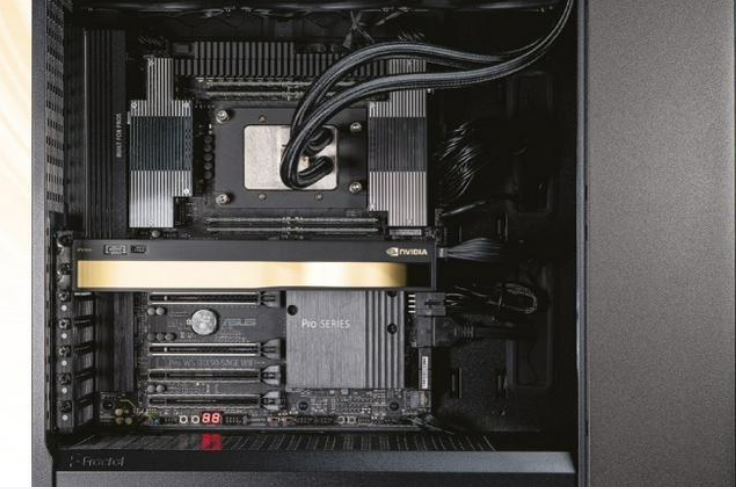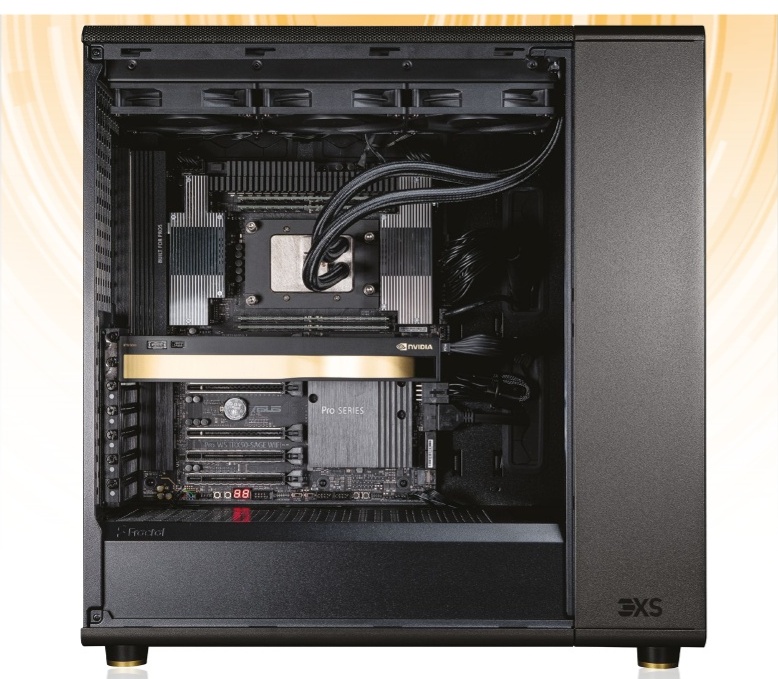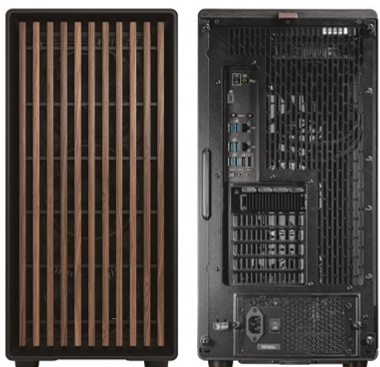
This review first appeared in issue 361 of PC Pro.
Scan is the second manufacturer this month to take advantage of the return of the non-Pro AMD Ryzen Threadripper CPU. However, Scan has opted for a lesser model than Armari, enabling more potent graphics acceleration and a different performance balance as a result for this workstation.
Specifically, Scan chose the AMD Ryzen Threadripper 7970X. This is the 32-core variant, which offers 64 threads and a base clock of 4GHz with a 5.3GHz boost. Of course, with AMD processors that have Precision Boost Overdrive enabled, the actual frequency will depend dynamically on power and temperature. Otherwise, the specifications are the same as the Armari CPU, with quad-channel memory support and 48 PCI Express 5 lanes plus 24 PCI Express 4 lanes.
With a cheaper processor than Armari, Scan has spent some of its savings on providing double the memory. There are four 64GB GDDR5 DIMMs, enabling quad-channel bandwidth and running at 4,000MHz. These are ECC modules, too, for enhanced stability. The Asus PRO WS TRX50 Sage WiFi motherboard supports a maximum of 1TB, but you probably won’t need any more memory in the lifetime of this system.
Another area where Scan has spent its CPU savings is in the graphics acceleration. We’ve seen 6000-series Nvidia RTX GPUs in the higher workstation price category before, but Scan has gone one rung down to the 5000 Ada Generation. This has a huge 12,800 CUDA cores and 32GB of ECC-backed GDDR6 frame buffer delivering 576GB/sec throughput.
Scan hasn’t entirely pushed the boat out when it comes to storage, however, with only a single drive included. It’s still relatively large and very fast, though. The 4TB Corsair MP700 NVMe M.2 unit operates at PCI Express 5 speeds, delivering 12,354MB/sec sustained reading and 11,758MB/sec sustained writing when we tested it in CrystalDiskMark.

If you need more, the good-looking Fractal North XL chassis offers two 2.5in drive mounts and two 2.5/3.5in mounts, so you can easily add more. The North XL’s wooden slatted front bears a more than passing resemblance to a freestanding heating unit created by a leading Swedish interior designer. Scan has also included a 1,000W Corsair RMx1000 PSU, which should handle all the powerful components with aplomb.
With half the cores of Armari’s high-end entry this month, the Scan system was never going to get close to it in CPU tests where this was the key aspect. The overall PC Pro media benchmarks score of 867 is still the second highest this month, with superb results of 281 in image editing, 816 in video encoding and 1,096 in multitasking. The Maxon Cinebench 2024 multi-CPU result of 3,459 falls marginally behind the PCSpecialist Zircon Extreme, coming third in the Labs. The Scan took 155 seconds to complete the Blender Gooseberry render, the second fastest.

While the Scan system can’t compete with Armari’s 64 cores, its more powerful GPU makes it one of the best this month for real-time viewport acceleration and GPU-assisted computation. The Nvidia RTX 5000 Ada Generation provides very competitive SPECviewperf 2020 3D animation results of 255 in 3dsmax-07 and 814 in maya-06. CAD and engineering workloads are even better catered for, with 202 in catia-06, 222 in creo-03, an incredible 1,210 in snx-04 and 609 in solidworks-07. But the W7900 is significantly faster in 3D animation.
The GPU delivers an impressive 27,069 for inferencing with Geekbench ML and 20,282 with LuxMark 3.1 OpenCL. To underline the power of this GPU, when rendered on CUDA the Blender Gooseberry frame took only 75 seconds to output – the second fastest GPU result we’ve seen.
The Scan GWP A1-TR64 is a more balanced system than Armari’s £10,000 offering. It’s also about £500 cheaper. However, the Armari is not so behind on graphics acceleration as it is ahead on CPU tasks, and that gives it the win overall. Scan still earns five stars and a Recommended award for good reason: if your workflow is more skewed towards intensive real-time viewsets and GPU accelerated computation, it’s a better choice. And it looks great, too.
!["[T]he First and Fifth Amendments Require ICE to Provide Information About the Whereabouts of a Detained Person"](https://images.inkl.com/s3/publisher/cover/212/reason-cover.png?w=600)






